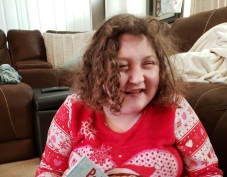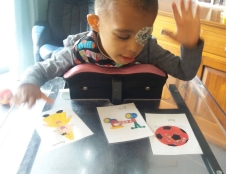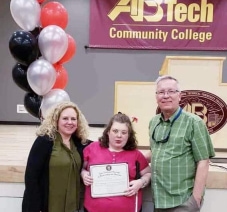


Early Intervention refers to services and supports for babies and young children with developmental delays. These services can help children to catch up in their development.
Early Intervention Services may include:
Physical Therapy treats problems with gross motor development (skills involving the large muscles of the arms, legs, and torso)
Further information on early intervention physical therapy:






Occupational Therapy treats delays in fine motor development (problems with moving the hands and fingers)
Further information on early intervention occupational therapy:
Speech therapy can help a child with speaking and language
Further information on early intervention speech therapy:





Special Education is the practice of educating school-age children in a way that addresses their individual needs. Modifications of the classroom, teaching methods, and instructional materials can maximize a child's ability to reach his potential.
School-age children with WAGR syndrome may have multiple conditions that impact their educational needs:
The most appropriate educational setting for a child with WAGR syndrome depends on individual needs. This setting may change from year to year as the child's needs change:
The IWSA Teacher Advice Form was developed to provide detailed information addressing challenges that may be present in a child with WAGR syndrome.
Children with WAGR syndrome are often slow to develop speech. Delays in speech development in children with this disorder may be caused by one or all of the following:
While most individuals with WAGR syndrome learn to speak and speak well, some individuals are not verbal. In some cases, sign language can be particularly useful. In others, Alternative communication and assistive technology can enable non-verbal individuals to communicate.
Sign Language
Sign language can be an effective way to facilitate speech in a child with WAGR syndrome. Sign language may help to:

Sign language is often introduced to infants at 6-12 months of age. Parents and caregivers can begin by learning just a few simple signs and use these signs while speaking the words at the same time. Common first signs are "milk", "eat", "more", and "all done".
Remember that just as with spoken words, children need to see the signs/hear the words consistently for months before they begin to mimic them.
Many sign language resources and online videos are available.



Alternative Communication
Children with WAGR syndrome who are non-verbal may benefit from tools, systems or devices that help them to communicate. Examples of alternative communication are
A speech therapist can help with evaluating the options for alternative communication, and also with helping a child to learn to use these tools effectively.
Alternative Communication can increase a child's independence, social skills and social interactions, and allow him to share his thoughts, feelings, and unique personality with others


Sign up for News & Events
COPYRIGHT© 2025 IWSA / International WAGR Syndrome Association
